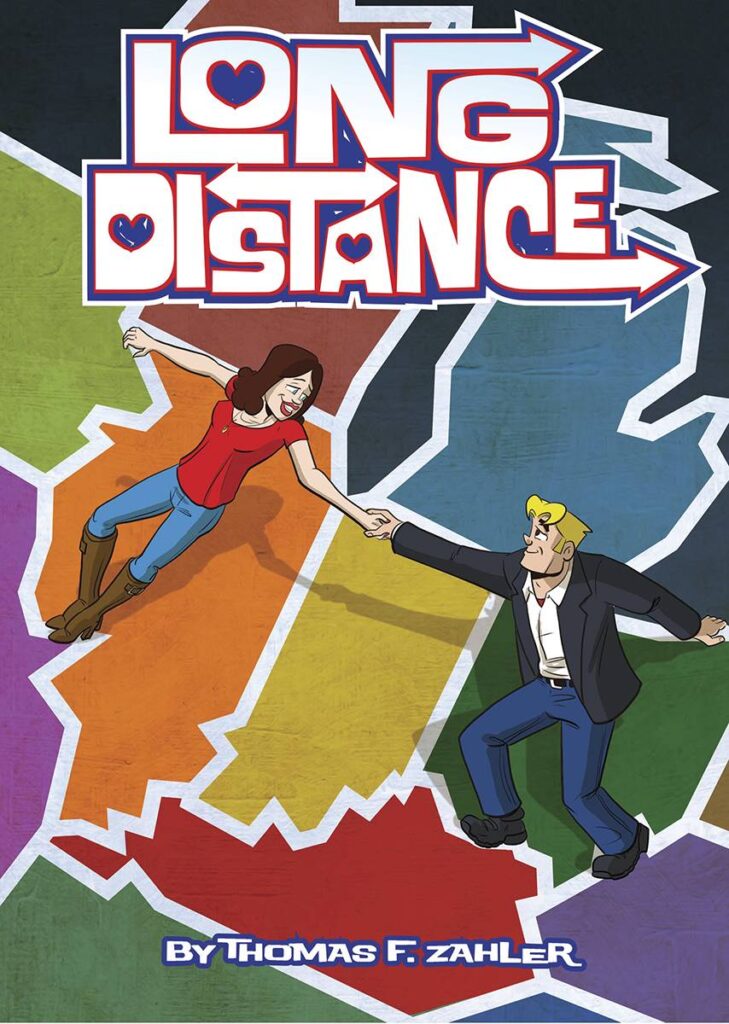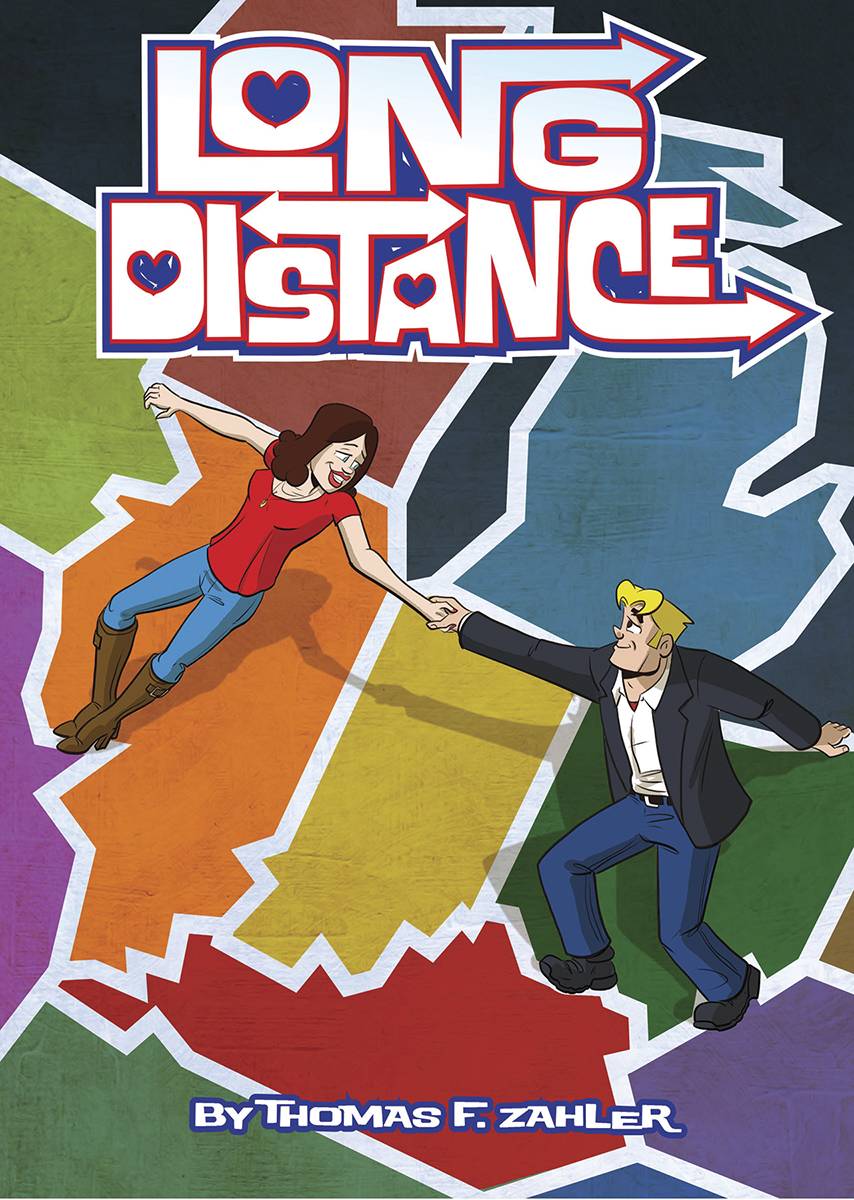Comic Book Review: Long Distance by Thomas F. Zahler
Commercial artist Carter Blue and rocket scientist Lee Smith meet in a New York airport when he’s knocked over by an unruly child. She sees his sketches, they both make geeky references, the two start talking, and a spark is lit. This could be love. Just one big problem–he lives in Columbus, Ohio and she lives in Chicago, Illinois. That’s a considerable drive or an expensive plane ticket to go on dates together. Can they make this long distance relationship work?

This romance comic started, the introduction and author’s notes mention, as a pitch for a romantic comedy television show. Like the vast majority of such pitches, it wasn’t picked up and sat in a drawer for a decade until the creator needed an idea for a comic book miniseries. Newer communication technology changed the shape of events a bit, a lot of pop culture references had to be updated, and the arc shortened to fit in four issues instead of an entire TV season. But the basic idea was still sound.
There’s a framing device of Carter telling the story of the relationship to a stranger he met in the airport; thankfully the shortened arc sticking with the early days of the story means it doesn’t reach How I Met Your Mother levels of implausible timeframe.
Good: This is a feel-good story. The big stressor on the romantic relationship is exactly the difficulties that arise from the physical distance, and its conflicts with the reasons each of the couple has to not just move to the other’s location. The closest thing to an antagonist is Lee’s boss Dr. Clark, who’s just inconsiderate, full of himself and not trained for a management position. This is contrasted to Carter’s partner Tim, who is good at management and knows when to support his employees vs. when to give them a push.
The use of duo-tones (black, white and just one other color) to indicate locations works well. Ohio is green, Illinois an orangish-brown, and other states their own colors. This helps give the impression that these locations really are different places, and sells the distance effect.
Less good: Some of the advertising tries to sell this as a “romantic comedy” but the humor is only mildly amusing geeky references in conversational banter. (On the plus side, the story does meet the Shakespearean definition of a “comedy” as it ends with the successful establishment of a relationship.)
A big deal is made of Carter not going for sex on the first date to show that he has more moral fiber than other men Lee’s dated–and then they just go ahead and have sex on the second date. It still feels a bit rushed to me.
Content note: Extramarital sex happens (off page) and is talked about. Also, one of the variant covers shows a woman in an undergarment. While I don’t think readers from junior high on up will have any difficulty here, the general tone and subplots really aim this story at adults of working age.
Overall: The ending just kind of skims over several seasons’ worth of what might have been a successful sitcom, but for a comic book miniseries, it’s just the right length. It’s a good choice for comic book fans ready for a contemporary adult romance, or for romance readers who prefer non-fantastical stories in their comics.

